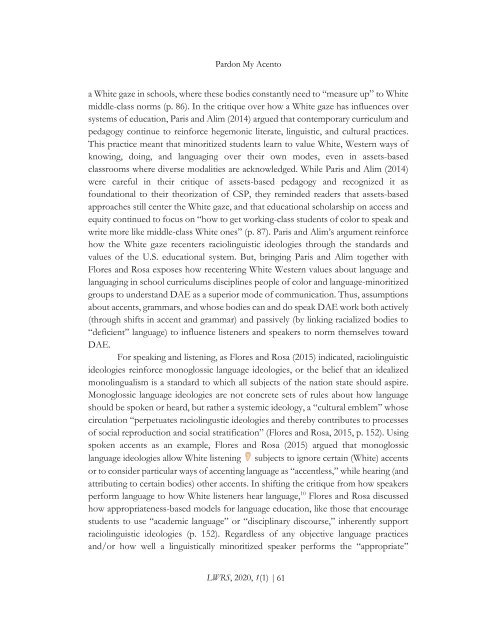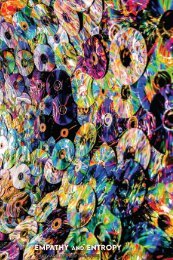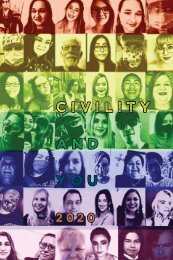LWRS June 2020 Volume 1, Issue 1
Inaugural Issue co-edited by Yndalecio Isaac Hinojosa and Isabel Baca
Inaugural Issue co-edited by Yndalecio Isaac Hinojosa and Isabel Baca
Create successful ePaper yourself
Turn your PDF publications into a flip-book with our unique Google optimized e-Paper software.
Pardon My Acento<br />
a White gaze in schools, where these bodies constantly need to “measure up” to White<br />
middle-class norms (p. 86). In the critique over how a White gaze has influences over<br />
systems of education, Paris and Alim (2014) argued that contemporary curriculum and<br />
pedagogy continue to reinforce hegemonic literate, linguistic, and cultural practices.<br />
This practice meant that minoritized students learn to value White, Western ways of<br />
knowing, doing, and languaging over their own modes, even in assets-based<br />
classrooms where diverse modalities are acknowledged. While Paris and Alim (2014)<br />
were careful in their critique of assets-based pedagogy and recognized it as<br />
foundational to their theorization of CSP, they reminded readers that assets-based<br />
approaches still center the White gaze, and that educational scholarship on access and<br />
equity continued to focus on “how to get working-class students of color to speak and<br />
write more like middle-class White ones” (p. 87). Paris and Alim’s argument reinforce<br />
how the White gaze recenters raciolinguistic ideologies through the standards and<br />
values of the U.S. educational system. But, bringing Paris and Alim together with<br />
Flores and Rosa exposes how recentering White Western values about language and<br />
languaging in school curriculums disciplines people of color and language-minoritized<br />
groups to understand DAE as a superior mode of communication. Thus, assumptions<br />
about accents, grammars, and whose bodies can and do speak DAE work both actively<br />
(through shifts in accent and grammar) and passively (by linking racialized bodies to<br />
“deficient” language) to influence listeners and speakers to norm themselves toward<br />
DAE.<br />
For speaking and listening, as Flores and Rosa (2015) indicated, raciolinguistic<br />
ideologies reinforce monoglossic language ideologies, or the belief that an idealized<br />
monolingualism is a standard to which all subjects of the nation state should aspire.<br />
Monoglossic language ideologies are not concrete sets of rules about how language<br />
should be spoken or heard, but rather a systemic ideology, a “cultural emblem” whose<br />
circulation “perpetuates raciolingustic ideologies and thereby contributes to processes<br />
of social reproduction and social stratification” (Flores and Rosa, 2015, p. 152). Using<br />
spoken accents as an example, Flores and Rosa (2015) argued that monoglossic<br />
language ideologies allow White listening ( subjects to ignore certain (White) accents<br />
or to consider particular ways of accenting language as “accentless,” while hearing (and<br />
attributing to certain bodies) other accents. In shifting the critique from how speakers<br />
perform language to how White listeners hear language, 10 Flores and Rosa discussed<br />
how appropriateness-based models for language education, like those that encourage<br />
students to use “academic language” or “disciplinary discourse,” inherently support<br />
raciolinguistic ideologies (p. 152). Regardless of any objective language practices<br />
and/or how well a linguistically minoritized speaker performs the “appropriate”<br />
<strong>LWRS</strong>, <strong>2020</strong>, 1(1) | 61





